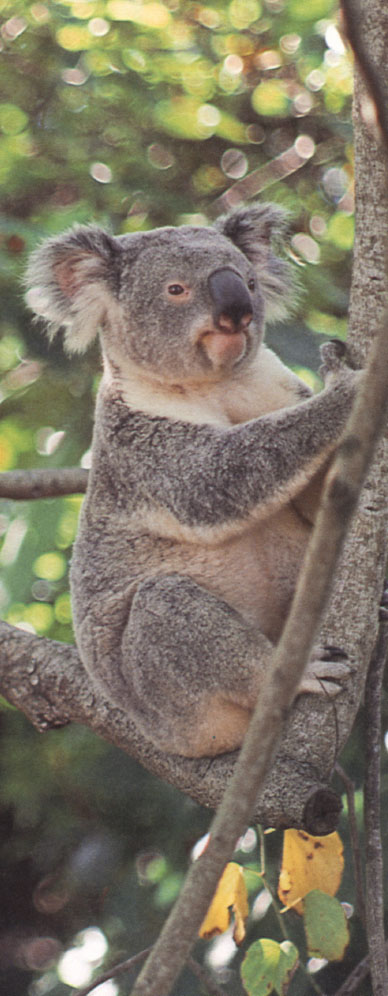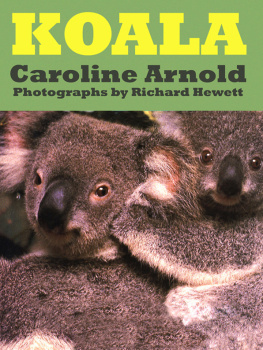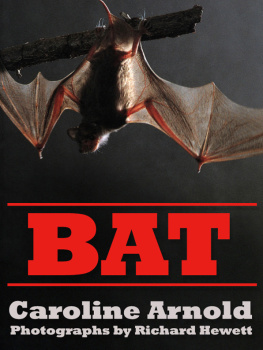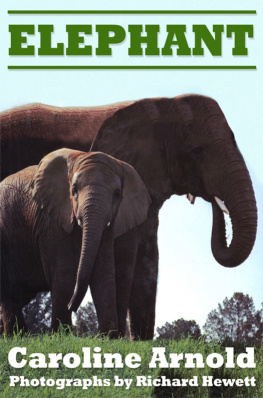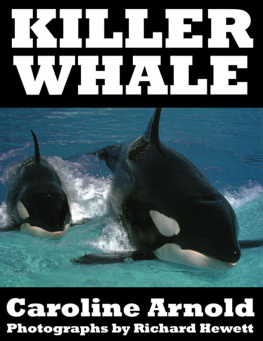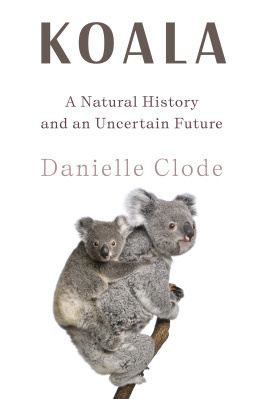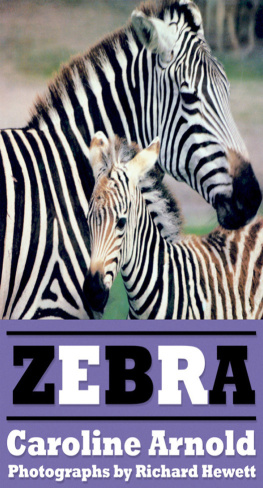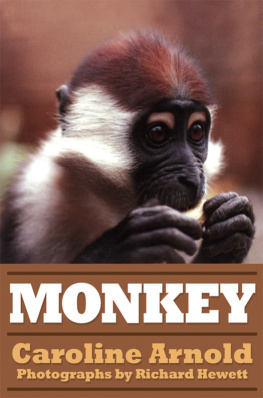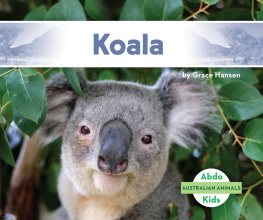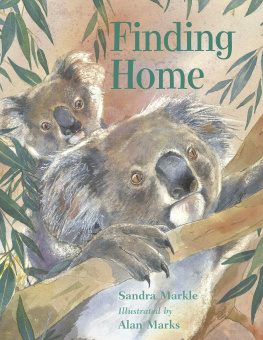CONTENTS


Guide


PHOTO CREDITS: Permission to use the following photographs is gratefully acknowledged: Roy Hunter, pp..
Text copyright 2013, 1987 by Caroline Arnold. Photographs copyright 2013, 1987 by Richard Hewett. All rights reserved.
Published by Seymour Science LLC
(Printed edition originally published in 1987 by William Morrow and Company)
Except in the case of brief quotations embodied in critical reviews and articles, no part of this book may be used or reproduced in any manner whatsoever without written permission from the publisher. Contact: Starwalk Kids Media, 15 Cutter Mill Road, Suite 242, Great Neck, NY 11021.
www.StarWalkKids.com
ISBN 978-1-623345-49-5
The Library of Congress has cataloged the printed edition as follows: Arnold, Caroline. Koala. Summary: Describes the habitat, varieties, physical characteristics, feeding habits, and other behavior of this marsupial, focusing on one individual animal and her baby in an Australian sanctuary. 1. KoalasJuvenile literature. [1. Koalas] I. Hewett, Richard, ill. II. Title. ISBN 0-688-06478-7 | ISBN 0-688-06479-5 (lib. bdg.)


ACKNOWLEDGMENTS
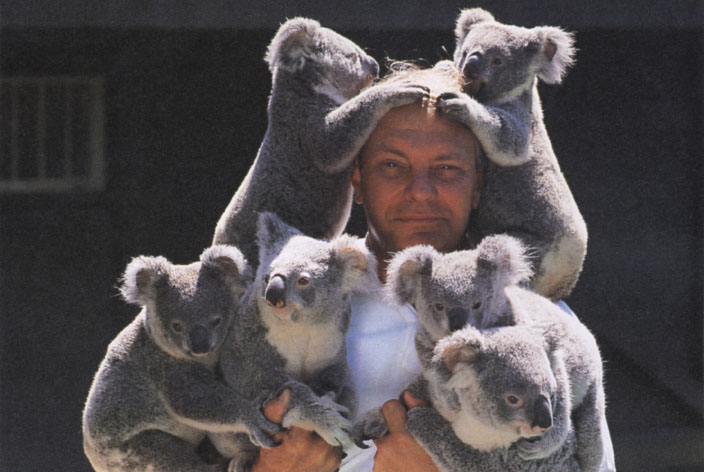

Many people have helped us on this project. We thank Qantas Airways and Terry Bransdon of the Australian Information Service, whose generous assistance made it possible for us to go to Australia to research and photograph the book. We thank the staff of Lone Pine Koala Sanctuary in Brisbane, Australia, and Pat Robertson (pictured above), owner and director, who so graciously gave us their time and cooperation. In particular we thank Peter Douglas, Terry Carmichael, Paul OCallaghan, Mark Brumm, and Roy Hunter. We are also grateful to Tony Wood, Bryan Nothling, Don Burnett of the Eprapah Environmental Center, Neville and Jane Davis, and John Hughes for their assistance. Lastly, we want to thank our editor, Andrea Curley, for her enthusiasm and encouragement throughout this project.
Moving nimbly among the branches, Frangipani found a new resting place. Then, extending her long, furry arm, she reached out for a new leaf. As she ate it, she could hear the other koalas that lived at the Lone Pine Koala Sanctuary in Brisbane, Australia, moving about on nearby branches. Like most of the koalas at the sanctuary, Frangipani had been born there. She had been named after a tropical flower that grows in Australia. Now Frangipani was three years old. One month earlier she had mated with one of the male koalas. Soon she would be having her own baby.


During the early years of Australias settlement by the English, koalas filled the forests along the eastern and southeastern coasts. However, their numbers began to grow smaller as many of them were killed for their soft fur. Later, as cities expanded and forests were chopped down to make room for houses, people began to fear that the koala would disappear altogether and become extinct. Laws were passed to protect koalas, and special parks and preserves were established so people could see koalas up close and learn more about them. The parks also provided a safe place for the koalas to live.
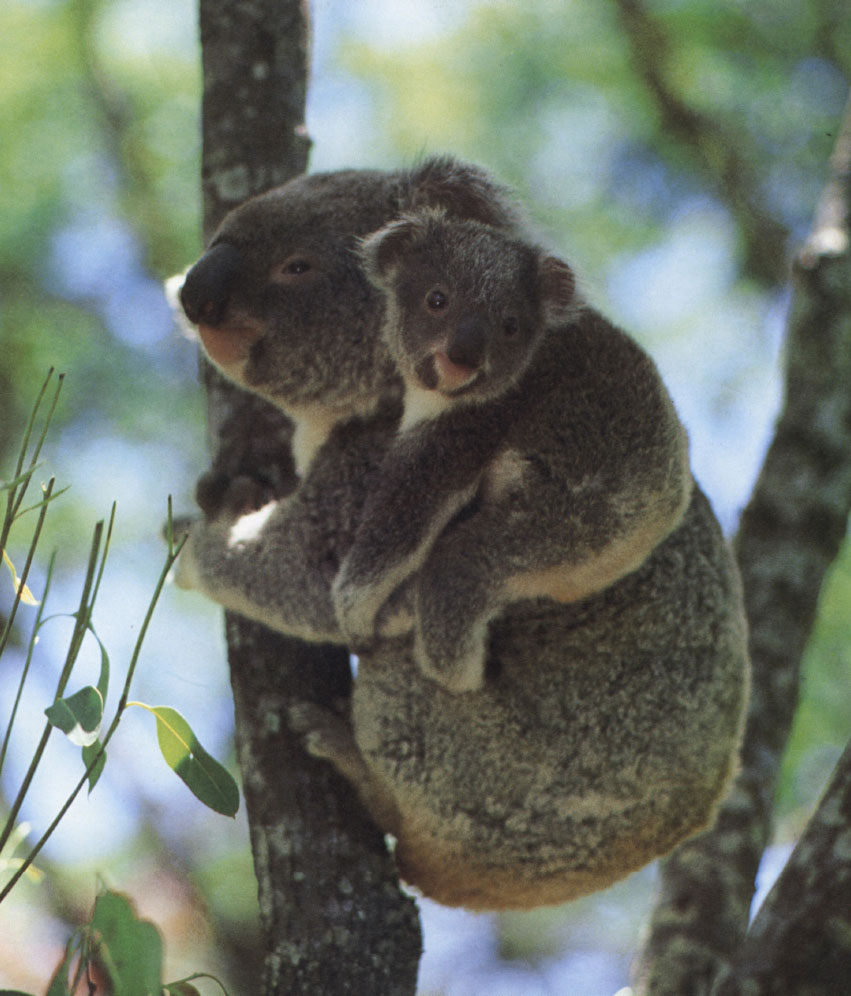

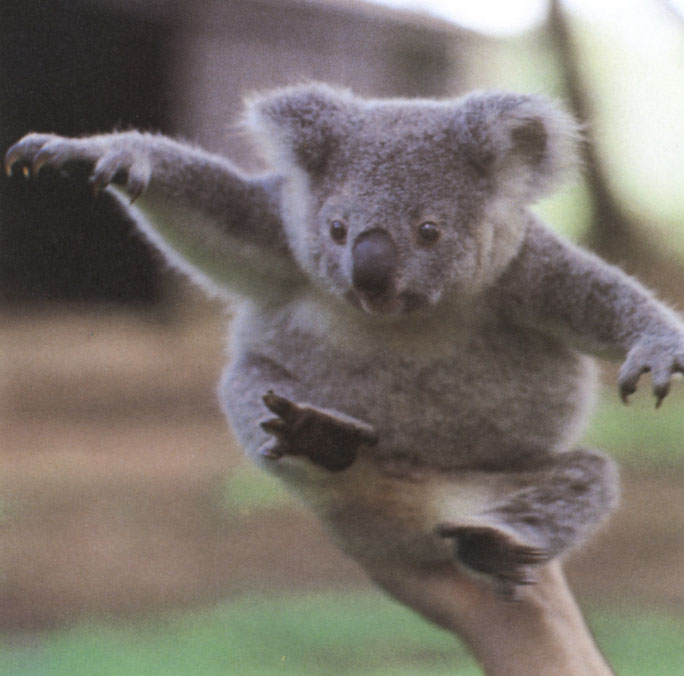

Today, some of the koalas born at these preserves are put back into the wild in places where koalas once lived but have since disappeared. Others are sent to zoos. People all over the world seem to love these furry creatures that look more like stuffed toys than live animals.
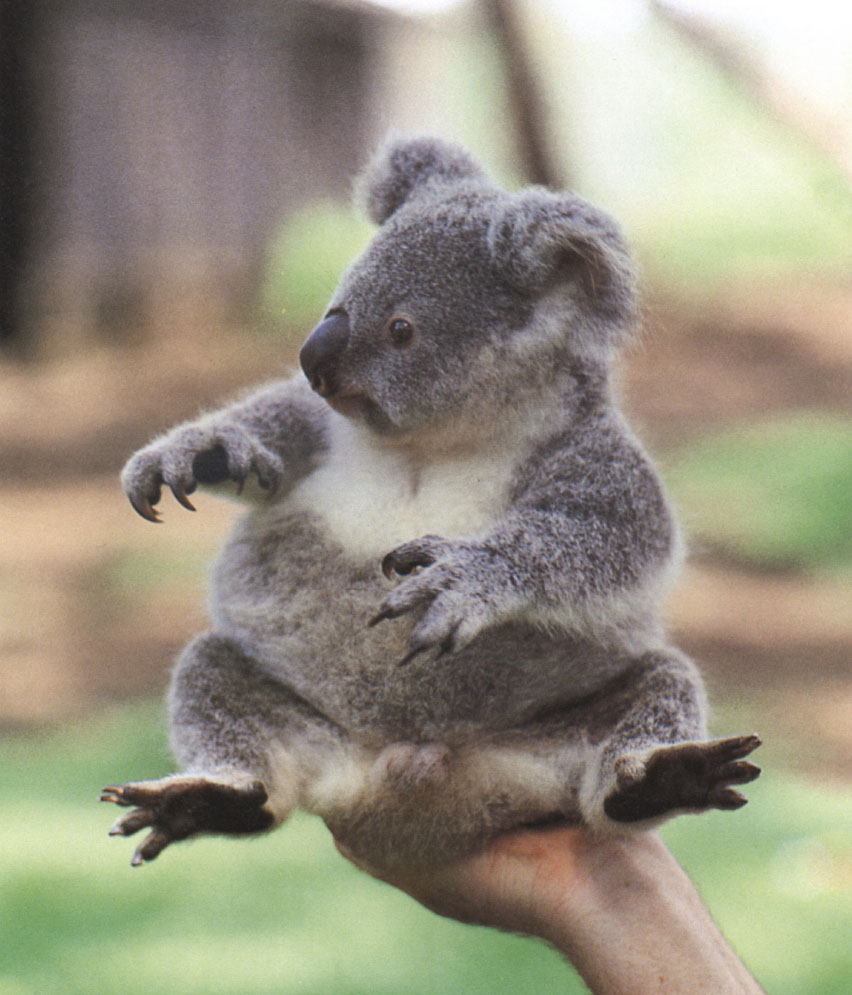

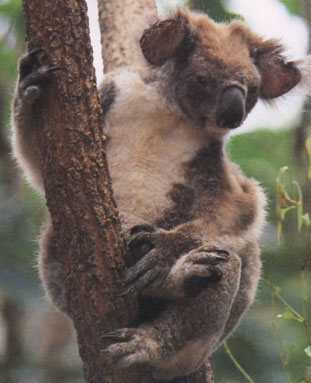

Victoria koala.
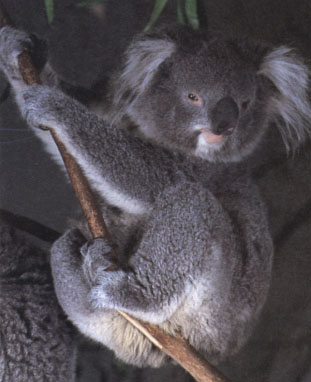

New South Wales koala.
The scientific name for the koala is Phascolarctos cinereus, which, in Latin, means furry, pouched, gray bear. Although the koala looks like a toy teddy bear, it is not a bear at all. It is more closely related to animals like opossums.
There are three varieties of koalas. The largest, the Victoria koala, lives in southern Australia. Its darker color and shaggy fur help to keep it warm in cold weather. The New South Wales koala is middle-sized and has shaggier ears than the smaller Queensland koala. Frangipani and the other koalas at the Lone Pine Sanctuary are the Queensland type.


Queensland koala.
